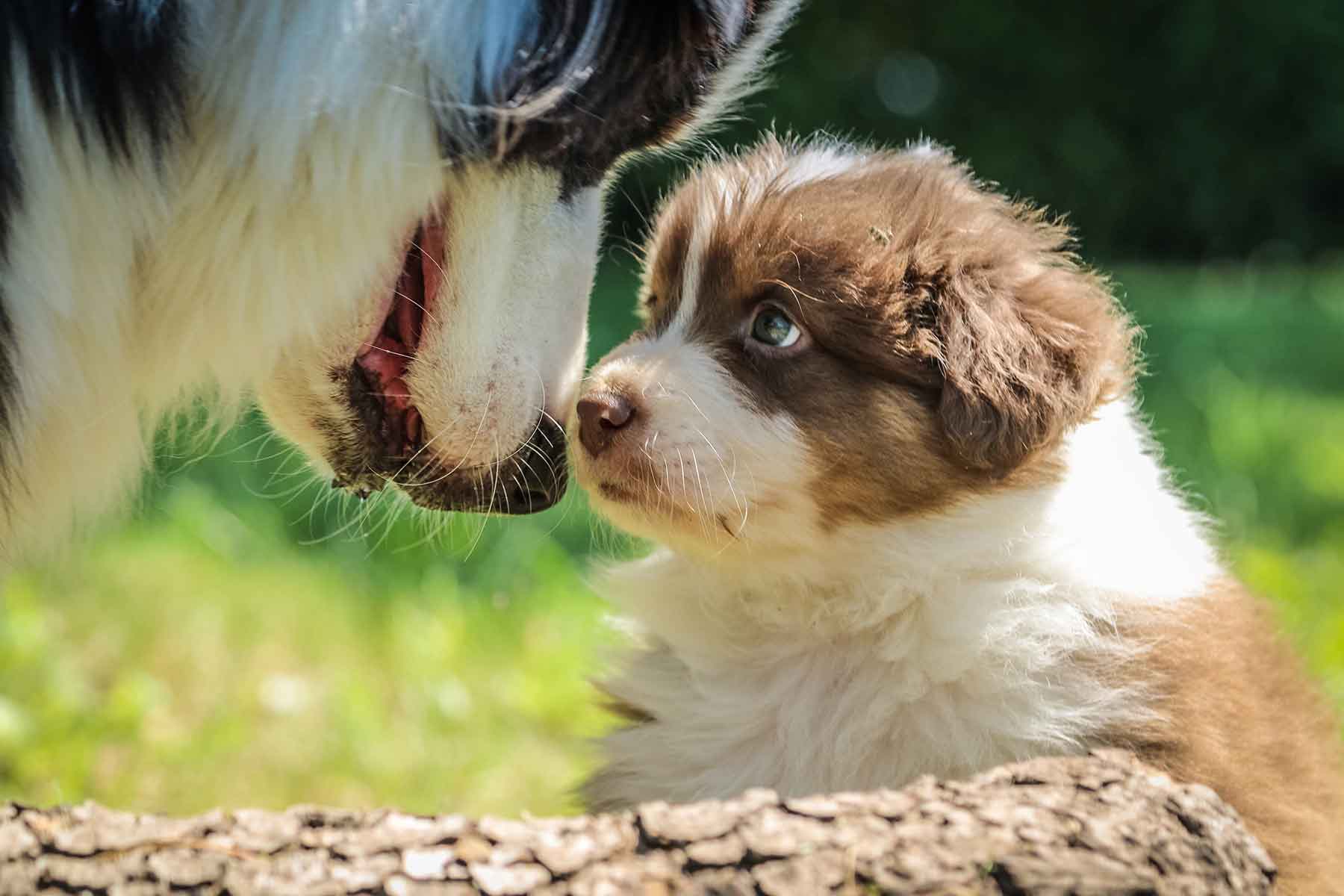Vaccinations are vital in protecting our pets from contagious and often fatal diseases. Here is a list of the most commonly discussed dog diseases we vaccinate against and some of the names you will hear used.
The most important infectious diseases of dogs that we vaccinate against are:
Distemper
Distemper is a highly contagious viral disease which is often fatal. It can be spread via nose to nose contact with infected animals, or sniffing urine, vomit or faeces from an infected animal. It affects many body systems including the respiratory, gastrointestinal, nervous and lymphatic systems. The most common signs of disease are a pussy discharge from the eyes and nose followed by depression and various signs depending on which organs are affected. Other signs include skin rashes, loss of appetite, weight loss and nervous system signs including muscle twitching, blindness, unco-ordination, and seizures (fits). These nervous signs do not always occur early in the disease. They may be seen weeks or even months after the other signs.
Hepatitis
Hepatitis describes inflammation of the liver, but the disease is actually more extensive than affecting just this organ. Initially the dog has a fever, then the virus spreads to the lymphatic system and damages the liver and kidneys. Other signs include tonsillitis, abdominal pain, depression, lethargy and loss of appetite. Occasionally animals will have a “blue” looking eye, due to cloudiness of the cornea.
The disease is acquired by inhalation or ingestion of an infected droplet, usually in urine or faeces and can be fatal.
Parvovirus
Parvovirus is a viral disease which affects the gastrointestinal tract, bone marrow and lymphatic systems. Affected dogs and puppies show signs of severe gastroenteritis, with vomiting and foul smelling diarrhoea, often with blood present. The pups become depressed, dehydrated, do not eat and suffer abdominal pain, and is often fatal. The disease is far more common in animals less than six months of age or those not vaccinated.
The disease is acquired by contact with the saliva (or vomitus) or faeces of an infected animal or by direct contact with an infected animal. However, the virus can persist in faeces in the environment for several months if conditions are favourable. An animal can become infected by contact with contaminated areas of the environment. Humans can carry the disease on their hands and clothing from one dog to another.
Canine Cough also known as Kennel Cough
Parainfluenza (viral) and Bordetella (bacterial) both cause tracheobronchitis (inflammation of the windpipe and bronchi).
Signs are characterised by a sudden onset of a dry hacking cough. Often the dog is bright and active but the cough worsens with activity and the dog ends up gagging or dry-retching after the cough.
Most dogs recover after around a week. Occasionally complications such as pneumonia may occur, more commonly in puppies.
The disease is acquired from inhalation of droplets from a cough from an infected dog or direct nose to nose contact with infected dogs. Dogs are more likely to get the disease from kennels, pet shops and other stressful environments where many animals are housed, but any contact with an infected dog (eg in a park or at the beach) may lead to the disease.
Though distemper, hepatitis and parvo are all life-threatening, parvo is the most commonly seen, mostly in younger dogs.
Find out more about coughing in dogs.
Dog Vaccinations
Vaccinations are administered from puppyhood with boosters given throughout the life. Every dog is different and that is why we will advise you on which diseases your dog needs to be protected from based on their environment and lifestyle.
To ensure your furry friend can live a long, healthy life it’s essential to vaccinate your dog. Find a local vet near you to book an appointment today.











